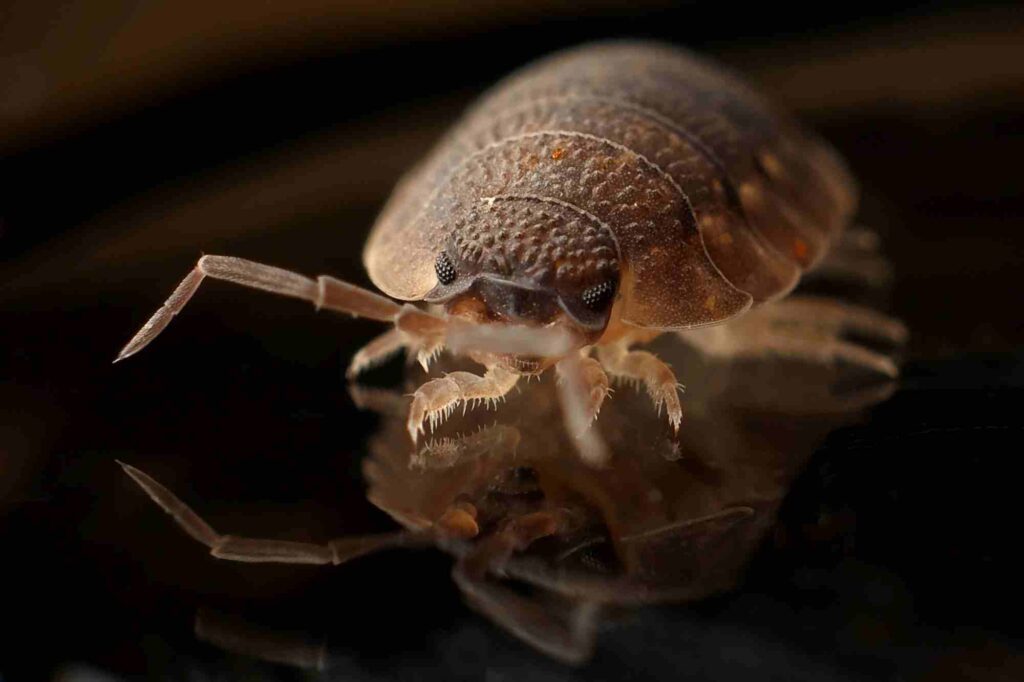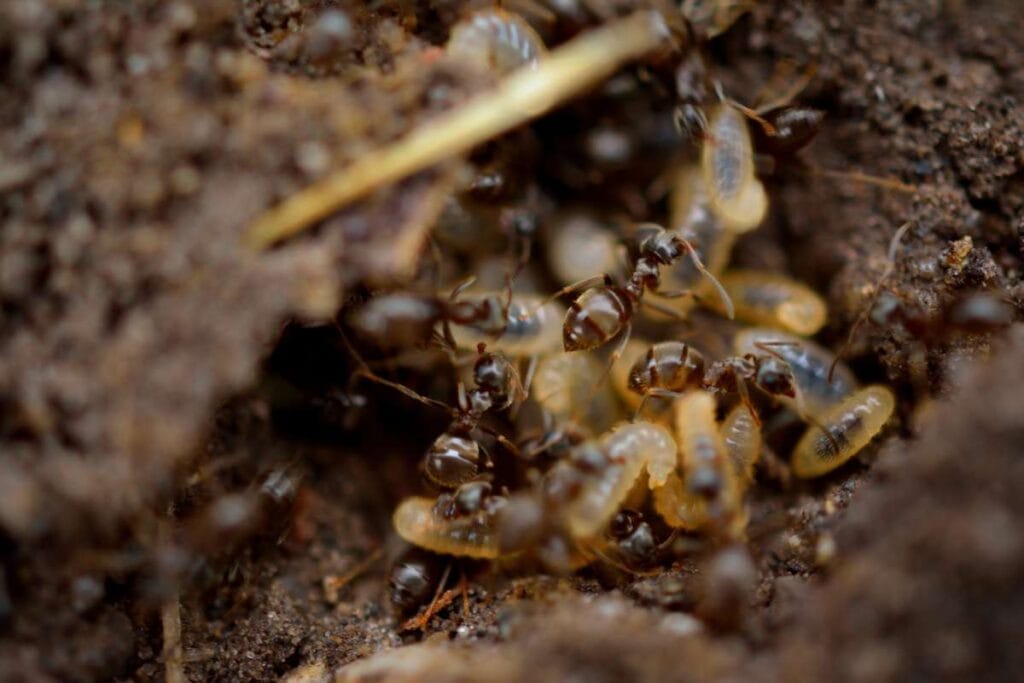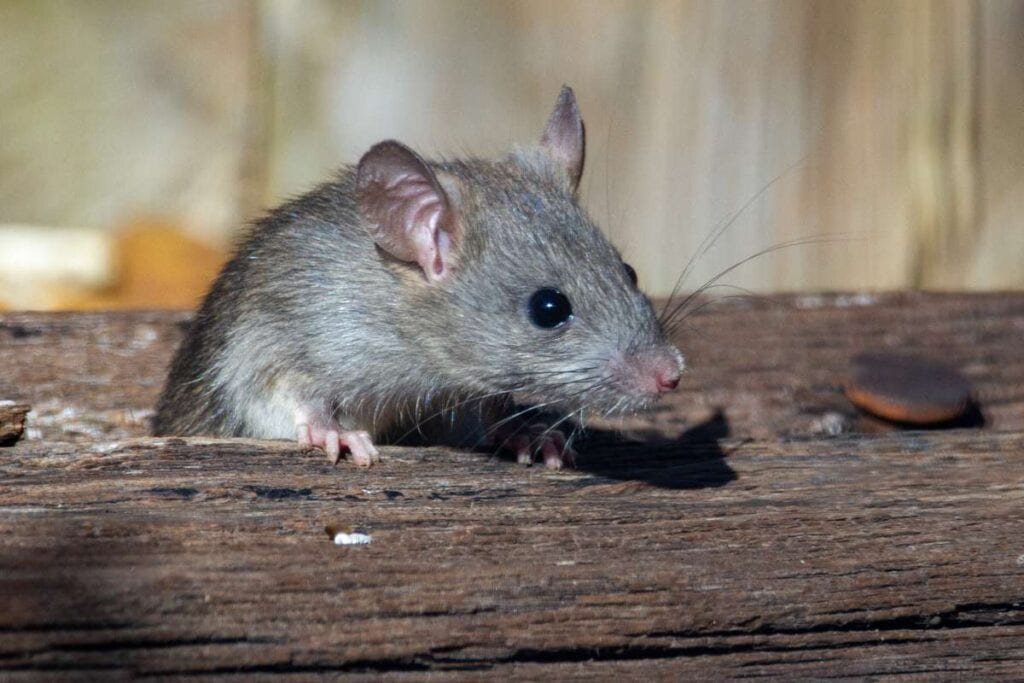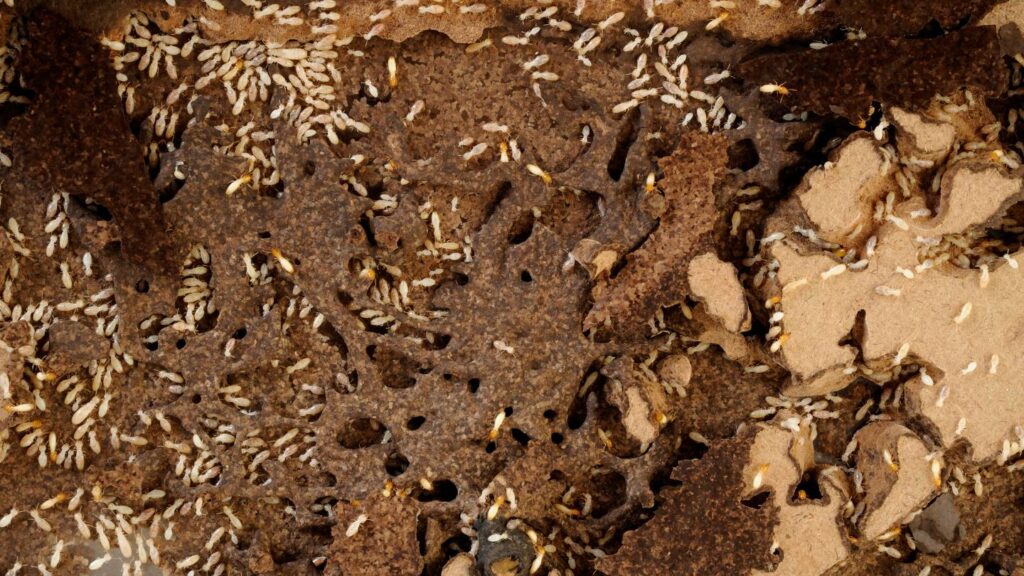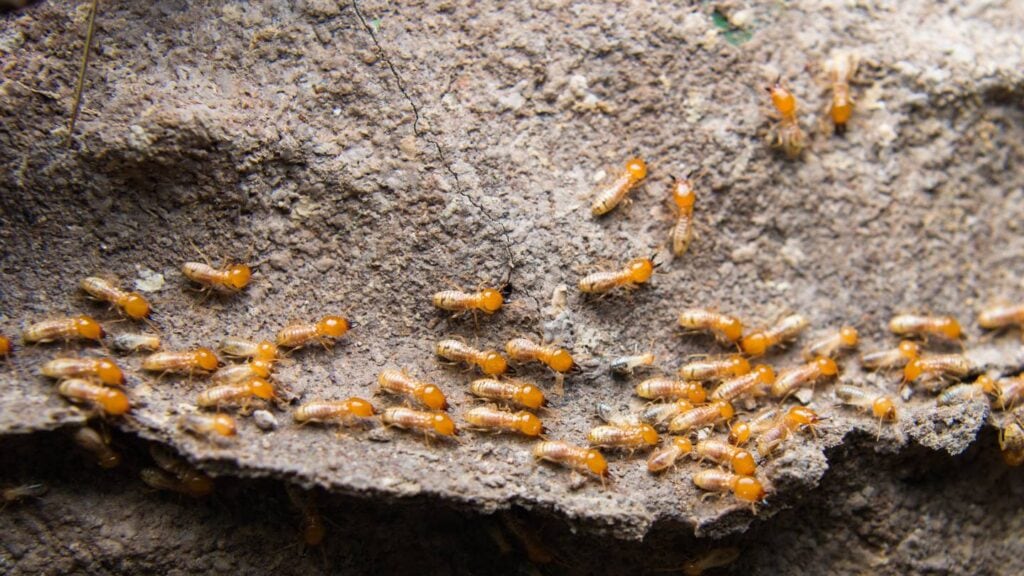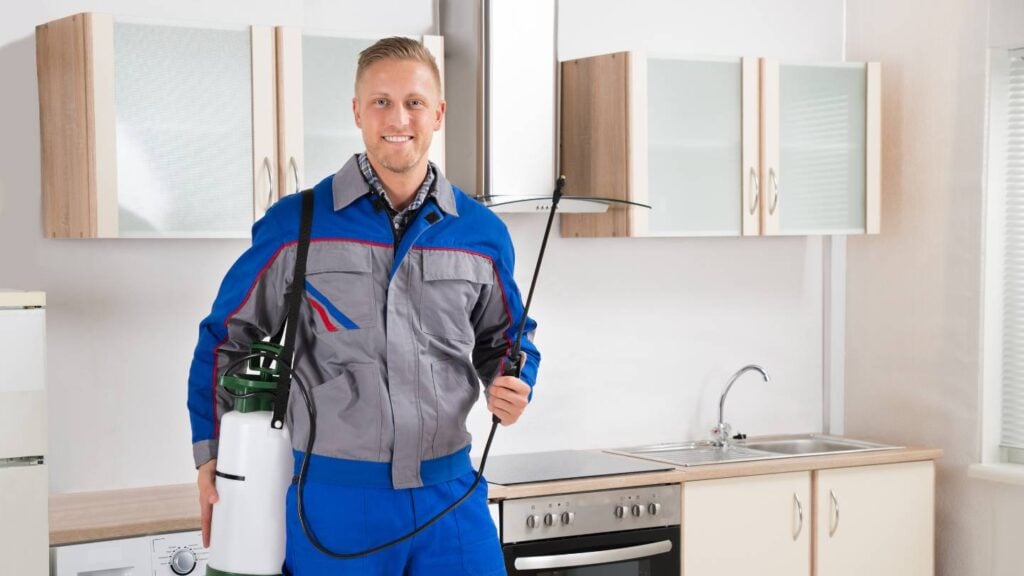But carpets can also serve as a habitat for these insects and other pests. You can do a few things to check for and treat bed bugs in your carpets if you have reason to suspect they may be hiding there. In this piece, we'll review the signs of a bed bug infestation in your carpets and offer advice on eliminating them. Read on to find out what those dots or bites are on your skin!
If you suspect you have a bed bug problem or are dealing with an actual infestation, you may wonder where the bugs could be hiding. Bed bugs are notoriously difficult to detect because of our inability to feel their bites, even if we reasonably suspect they occur while we sleep. Some people don't develop an allergy to bed bug bites until as long as two weeks after being inflicted.
Bed bugs can survive in and around carpeting, as well as all other upholstered furniture in your home. Bed bugs can squeeze into spaces as small as the one between the baseboard and the carpet because of their slender bodies. Bed bugs prefer to conceal themselves along the perimeter of a mattress, particularly close to the headboard. For extended periods, the bugs are safe from being noticed or destroyed while remaining close to human hosts.
You can now pick up unwanted hitchhikers anywhere, not just in hotels. Bed bug infestations are everywhere, from aeroplanes and airports to dining establishments and classrooms. It's easy for these pests to infest your home after a trip to an infested area because they can fit into small, confined spaces, like a backpack, purse, or suitcase.
On the other hand, bed bugs aren't the only pests that prefer to hang out near humans, especially in less frequented areas. Many different problems are also well-adapted to these conditions. Fleas, as one example, are blood-sucking pests that can make a home in fabric. Both of these animals share many characteristics that make them easy to confuse if you haven't seen them before.
FAQs About Pest Control
Even though bed bugs prefer to live on mattresses, they can also live in carpets. The bugs won't dig into the carpet but will stay close to the top. So they are easier to vacuum up!
Bed bugs can live in cold weather; adults can go up to a year without eating.
Check for bed bugs in the area right around your bed, including the carpet. Bed bugs like to hide, but they don't always get rid of their droppings and dead skin.
If you then combine hosing down, dual tape, silica gel, and cleaning the house, you will have a much easier time removing bed bugs and their eggs from the location. They should be there in no time either if you do not get rid of the rest of their belongings immediately.
Bed bugs might be able to live in mattresses and pillows. Pillows can also have bed bug eggs, so they could be where bed bugs get in. Bites could be a sign that bed bugs are in your pads.
You Can Distinguish A Bed Bug Infestation From A Flea Infestation By Looking For A Few Key Indicators.

The size and shape of a single apple seed describe the bed bug.
Usually most active after dark.
Beds, upholstery, and other furniture are familiar places to find this.
A flea is about the size of a ballpoint pen's point.
The most noticeable activity is observed during the day.
Fleas can be found on pets, in pet bedding, or carpets; however, having fleas is not necessary for having pets.
The bugs are located in the primary distinction between the two; although fleas can infest furniture, they are more at home on the fur of animals because it serves as both a haven and a ready source of food. However, bed bugs only remain attached to hosts for as long as it takes to obtain a blood meal. Then they go back to their respective hiding places.
If you have a bug and don't know what kind it is, you should talk to an expert. Both of these pests have distinctive appearances and behavioural patterns, and a pest control expert will be able to identify them and provide you with practical solutions.
While waiting for professional help, a homeowner who suspects a bed bug infestation can conduct a preliminary inspection. Evidence of a problem should be observable, even if the infestation is severe. Despite this, bed bugs are crafty little critters. There may be an infestation even if no outward signs exist.
Inspection Procedures For Identifying Bed Bugs
Knowing exactly where to look is essential for locating bed bugs. Your mattress should be the first place you look. To prevent spreading bedbugs, remove all bedding and seal it in a plastic bag. Search for any tiny black or red stains on your mattress next. These stains are most often the result of bed bug faeces or the crushed bodies of the insects themselves. Eggs, which look like tiny white dots, should also be searched for, but they can be challenging to spot. And, of course, you should be on the lookout for actual bed bugs. Using a flashlight can make this inspection much simpler.
There will be a high concentration of living bugs near your mattress and bedspread's edges, seams, and piping. One more place they can be concealed is inside the box spring. You can identify a severe infestation by shining a flashlight into cracks like those between the carpet and the baseboards.
Self-research is only helpful for primary purposes; you should consult a professional for a more in-depth analysis. Specialists in pest management regularly carry out inspections like this and know what to look for.
If you are seeking a pest control professional who can help you get rid of those annoying creatures once and for all, All Pests is the company for you.
All Pests offers a professional and affordable service that will rid your home or office of any unwanted pests.
So whether it's ants, spiders, cockroaches, or any other type of pest, we can help!
We understand that dealing with pests can be stressful and inconvenient. That's why we offer a range of services that are designed to meet your needs and budget.
Call 0409 523 029 to find out more about our services.
Solving The Problem Of Bed Bugs In Floor Coverings
You can extract some bed bugs from carpets with a good vacuuming. Not that you will eliminate all the eggs or bugs, but you can reduce the population. Since bed bugs can hide in the deepest crevices of your carpets and furniture, you'll need to use as powerful a vacuum suction as possible when removing them. When looking for bed bugs, the best bet is to use a crevice tool to get into the inconspicuous spaces they favour for concealment.
While localised treatments may help address specific issues, heat treatments are the most effective option for treating the entire home. Even though bed bugs are well-adapted to life indoors, they cannot survive in temperatures higher than 122 degrees Fahrenheit. The homeowner can treat sheets, furniture covers, and laundry by drying them in a hot dryer. Large-scale heat treatments are effective but require specialised equipment and extra care to prevent damage to your belongings. Professionals in the bed bug control field can advise on the best course of action to take and what steps to take afterwards to prevent reinfestation.
For most homeowners, tackling an infestation on their own only makes things worse and adds stress to an already difficult situation. If you don't know what you're doing, using store-bought pesticides could cause more problems than they solve.
Insects: Bed Bugs Vs. Carpet Beetles
The above image depicts a carpet beetle, another type of insect that can be mistaken for a bed bug. One key distinction is that carpet beetles are a nuisance pest that feeds on furniture padding and coverings, while bed bugs feed exclusively on human blood. Knowing the difference between the two will allow you to take the appropriate steps to eliminate these pests.
The Following Are Some Of The Characteristics Of Bed Bugs:
- Reddish-brown
- Flat
- Ticks and other biting insects
What Are Carpet Beetles?
Carpet beetles come in various shapes and sizes, but they're all roughly the size of a ladybug. In contrast, bed bugs look like flat apple seeds. Bed bugs are a flat tan to reddish-brown colour, while carpet beetles have a mottled colour pattern that ranges from black to brown to yellow. Most noticeably, bed bugs can't fly while carpet beetles can.
Finding larvae of both species reveals striking differences. The young bed bug population resembles adult insects in every way except size and colour. On the other hand, carpet beetles resemble caterpillars or fuzzy worms during their early stages.
The larvae of carpet beetles do not consume blood. These bugs would instead consume natural substances, particularly those found in plants. They will quickly devour your carpet, silk, fur, and other natural fibres. Many of the things a carpet beetle eats can be removed with good vacuumings, such as stray fibres from furniture, pet hair, and human hair. You can kill carpet beetles and their eggs with a steam cleaner, and some materials, like furs, can be treated by placing them in the freezer.
Allergies can be triggered by contact with beetle parts, faeces, or dust. Carpet beetle rash can look similar to that caused by bed bugs.
Dead animals and pests can be a real nuisance and health hazard. Are you looking for pest control professionals to help you remove the carcasses of these pests? All Pests Melbourne provides quick, affordable dead animal removal and pest control services that will take care of the problem for you quickly and safely.
How To Explain What Your Carpet, Not Your Bed, Has Bed Bugs

You're likely always on the lookout for bed bugs if you live in an area where there have been reports of an outbreak. Bed bugs are unfortunately not as rare as they once were, so you may have to deal with them at some point. It is essential if you've been on the road recently, brought in a used item, or have infested neighbours.
A bed bug infestation could theoretically occur anywhere in your home. It's not unusual to find these pests on your carpet. Keep reading for three reasons why bed bugs might be lurking on your carpet instead of your bed.
Their Lifestyle Necessitates Frequent Relocation.
They can't fly but can get around quite quickly by crawling along the ground or walls. If even a small number of bed bugs have found their way into your home, perhaps by hitchhiking on some vintage furniture you recently brought in, the infestation could quickly spread throughout your home. You will most likely find them on the carpet as they travel from room to room in your home.
The Perfect Place To Hide
Bed bugs love the plush, cushiony environment of carpet, especially if it is thick or shaggy. The rug in your home is the perfect place for a colony of bed bugs to set up camp and hide out from their human predators. Further, female bed bugs are constantly producing new bugs. A typical female bed bug will lay hundreds of eggs throughout her lifetime. It's possible to have hundreds of bedbugs in your home if the infestation progresses to a certain point. They will congregate in the most inconspicuous places, such as your bed, carpet, other furniture, and even inside your nightstands. Now is the time to call in a pest control expert to help you get rid of the infestation.
They Never Stop Looking
Because of the easy access to warm human bodies, they tend to cluster around beds. If you leave for a few days, however, or if they grow dissatisfied with the food supply, they may start exploring the rest of your house in search of a new eating spot. There's a good chance you'll find these bugs wandering around your carpet in search of a warm body to snuggle with during your trip.
It can be very challenging to pinpoint the source of these pests, let alone eradicate them.
Are Bed Bugs Capable Of Moving Across A Carpet To Feed?
When it comes to insects, bedbugs don't exactly have the best reputation for mobility. They are limited to crawling because of their inability to fly or leap. However, the short answer to whether they will cross your carpet to get to your bed or other furniture is yes. Even though they may move more slowly on the thick, plush carpet, they must be staying there because they can get food there.
Bed bugs can infest other areas of your home besides your bedroom. You should check the sofa, the office chair, and all the different seating areas in the house for bedbugs.
Even if bed bugs don't permanently set up residence in your bedroom, that doesn't mean they won't pay a visit there at night. Any other room would be the same. Bed bugs can be a problem if you spend a lot of time sitting still in the living room doing things like reading, sewing, painting, or playing video games.
The Question Is Whether Or Not Carpet Is Suitable For Bed Bugs To Reside In
How thoughtful of you to ask, and may we add, how handsome you are! Bed bugs are a legitimate concern for anyone who has carpeting in their home. Yet, could this pose a threat?
As often the case with these pests, the answer is "sort of." Although beds are a prefered habitat, bed bugs will make a home in almost any warm, dark, and dry place they can find.
Most importantly, they need a rough surface on which to lay their eggs and a place where they won't be discovered or disturbed.
These two needs can both be met by a carpet.
Where Can You Most Likely Find A Bed Bug?
The partially encouraging news is that bed bugs have difficulty penetrating the dense and short weave of modern carpets.
Unlike fleas, bed bugs won't hide out deep within your carpets.
It means that bed bugs are more likely to be on your carpet if there is something on top of the rug they can hide under. You could use the legs of your bed as an example.
Bed bugs frequently make a home in the crevice created between a person's legs and the carpet. It is the same for baseboards and furniture.
Bed bugs are commonly discovered in the narrow space between carpets and baseboards.
The good news is that bed bugs, unlike fleas, are not likely to infest your entire carpet.
Can I Find Bed Bug Eggs In My Carpet?
It's safe to say that bed bugs don't make the best parents. Once a male bed bug has impregnated a female, who may or may not be his mother, he has no further involvement with the offspring.
It gets worse for the women. After laying their eggs, they don't bother with them at all.
Bed bugs are indiscriminate about where they lay their eggs, much like their parents so they can be found anywhere.
Bed bugs need only a coarse surface. It is because bed bug eggs have difficulty adhering to nonporous surfaces. Because of this, bed bugs produce an adhesive chemical that they use to secure their eggs.
For this reason, a bed bug will choose to lay its eggs on a solid surface like wood or fabric rather than on a softer surface like paper. Unfortunately, the carpet is ideal for this.
In conclusion, the answer is yes, bed bugs can and do lay eggs in carpets. If this is the case, the only way to get rid of the bed bug infestation is to destroy all of the eggs in the carpet.
Do you have a pest problem? All Pests is a team of experts in small pests removal in Melbourne. Our fast and effective treatments will take care of any infestation, so you can rest easy knowing your property is safe.
Conclusion
So, how do you prevent bed bugs from infesting your home? A couple of things come to mind. First, be on the lookout for and alert authorities to any signs of bed bugs. Second, keep an eye out for pests by inspecting your carpets frequently. Relax if you discover bed bug signs in your home. Get in touch with a reliable pest control service right away for help. It is not a problem you should try to solve alone; eliminating these pests can be challenging.
Content Summary
- But carpets can also serve as a habitat for these insects and other pests.
- You can do a few things to check for and treat bed bugs in your carpets if you have reason to suspect they may be hiding there.
- In this piece, we'll review the signs of a bed bug infestation in your carpets and offer advice on eliminating them.
- Bed bugs can survive in and around carpeting, as well as all other upholstered furniture in your home.
- If you have a bug and don't know what kind it is, you should talk to an expert.
- Both of these pests have distinctive appearances and behavioural patterns, and a pest control expert will be able to identify them and provide you with practical solutions.
- Search for any tiny black or red stains on your mattress next.
- And, of course, you should be on the lookout for actual bed bugs.
- Solving The Problem Of Bed Bugs In Floor CoveringsYou can extract some bed bugs from carpets with a good vacuuming.
- Since bed bugs can hide in the deepest crevices of your carpets and furniture, you'll need to use as powerful a vacuum suction as possible when removing them.
- One key distinction is that carpet beetles are a nuisance pest that feeds on furniture padding and coverings, while bed bugs feed exclusively on human blood.
- The larvae of carpet beetles do not consume blood.
- Carpet beetle rash can look similar to that caused by bed bugs.
- A bed bug infestation could theoretically occur anywhere in your home.
- It's not unusual to find these pests on your carpet.
- Keep reading for three reasons why bed bugs might be lurking on your carpet instead of your bed.
- The rug in your home is the perfect place for a colony of bed bugs to set up camp and hide out from their human predators.
- It's possible to have hundreds of bedbugs in your home if the infestation progresses to a certain point.
- Now is the time to call in a pest control expert to help you get rid of the infestation.
- Bed bugs can infest other areas of your home besides your bedroom.
- You should check the sofa, the office chair, and all the different seating areas in the house for bedbugs.
- Bed bugs are a legitimate concern for anyone who has carpeting in their home.
- Although beds are a prefered habitat, bed bugs will make a home in almost any warm, dark, and dry place they can find.
- Most importantly, they need a rough surface on which to lay their eggs and a place where they won't be discovered or disturbed.
- It means that bed bugs are more likely to be on your carpet if there is something on top of the rug they can hide under.
- Bed bugs are commonly discovered in the narrow space between carpets and baseboards.
- In conclusion, the answer is yes, bed bugs can and do lay eggs in carpets.
- If this is the case, the only way to get rid of the bed bug infestation is to destroy all of the eggs in the carpet.
- Relax if you discover bed bug signs in your home.
- Get in touch with a reliable pest control service right away for help.
- Check for bed bugs in the area right around your bed, including the carpet.













